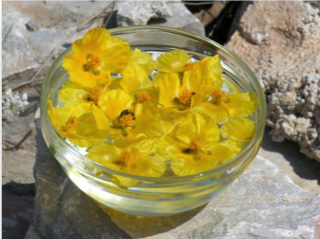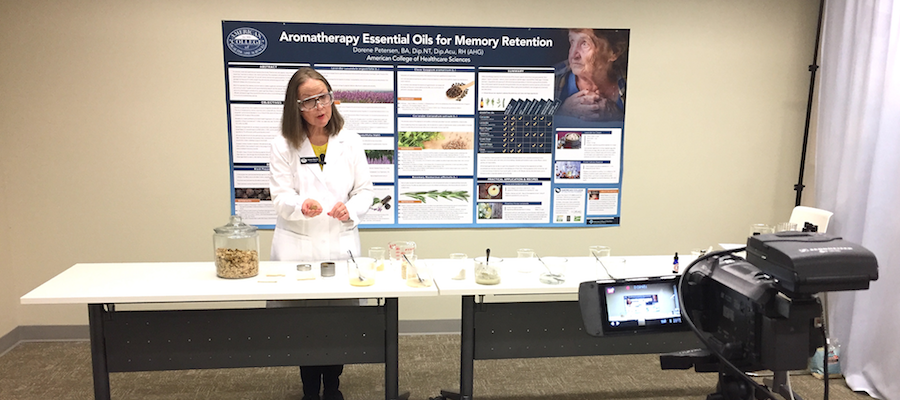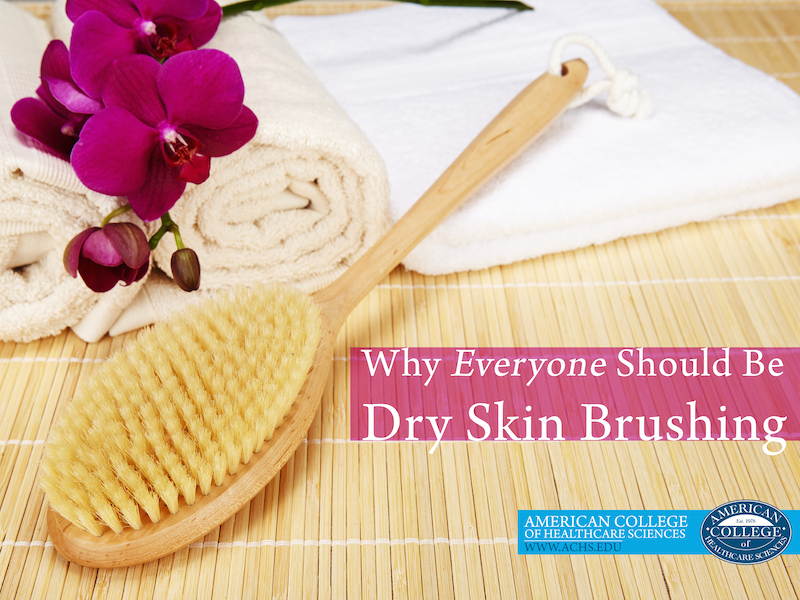UPDATE: You're invited to meet Dorene in person in San Francisco at 11 am on Sunday, September 29, in the lobby of the Intercontinental Mark Hopkins Hotel. RSVP by email to tanjakaneshiro@achs.edu.
It’s almost that time of year again … time for the annual conference for the International Federation of Essential Oils and Aroma Trade (IFEAT)! This year, the IFEAT conference will be held in San Francisco, California, from September 29-October 3.
I'm so excited to have been invited to speak on “What’s hot and what’s not: 2013-2014 US trends in the aromatherapy essential oil sector." All speakers have a 1/2 hour slot so I plan to cover, albeit quickly: what aromatherapy is, essential oil sources, essential oil quality, essential oil adulteration, essential oil labeling, primary physiological actions, and the administration of essential oils in clinical aromatherapy.
I will also share insights from a recent survey I sent out to the National Association for Holistic Aromatherapy (NAHA), the Alliance of International Aromatherapists (AIA), and Registered Aromatherapists (RAs)—thanks everyone who filled that in. This survey data from key communicators in the American aromatherapy profession is in addition to retail sales data provided by SPINS, a market research and consulting firm for the natural products industry.
Included in these data results are the top 10 essential oils currently being used in the American aromatherapy profession and in the aromatherapy natural channel segment, along with some key notable biological activity supported by a research review.
Then I'll consult my crystal ball and share my predictions for 2014 market trends, including factors that influence buying decisions in both the U.S. retail aromatherapy natural channel and in the professional clinical aromatherapy market today (if you subscribe to the blog, you'll automatically receive an email when my next article highlighting this information is published). My goal is to bridge the very diverse segments of an industry that shares raw materials to show how the essential oil producers can have an impact on the growing professional clinical and retail aromatherapy markets in the United States. That and get the fragrance and flavor guys excited about the value of aromatherapy! Many of the folks in this segment I have talked to still see it as an outlier with no real scientific backing.
For those who may not know, the IFEAT conference is the main annual event in the flavor and fragrance (F&F) industry and is held in various locations throughout the world. Previous conferences have been held in Barcelona, Marrakech, and Shanghai. The 2012 IFEAT conference was held last year in Singapore.
As I prepare for this year’s conference and my presentation, I can’t help but think back on the amazing experience I had in Singapore last year. The sensational city of Singapore with its stunning architecture and rich history was the perfect location for the 2012 conference focused on the theme “Essential Asia.” Asia, a source of mysterious, exotic raw materials (such as, clove, cinnamon, and nutmeg), continues to influence the flavor and fragrance industries globally and this influence is growing.
Last year’s IFEAT lectures and presentations focused on all aspects of market trends, new raw materials, innovative production techniques, legislative and regulatory issues, trade issues, sustainability, and various other related topics. The conference was truly a melting pot with opportunities for traders, producers, and end users to meet and share information. I wonder what the conference will hold in store for us this year?
IFEAT 2012 drew an international group of more than 980 delegates from 55 different countries. Speakers came from all around the world, including Singapore, China, India, Belgium, Germany, the Netherlands, Russia, Indonesia, Sri Lanka, Australia, Thailand, and the U.S., like me.
Most attendees are out on the trading floor buying and selling. Information-hungry, I eagerly sat up front through 25 presentations over 3 days on flavor and fragrance topics like “Essential Asia,” regulatory issues, sustainability and market issues, value added and market developments, new sources of natural ingredients, country studies, and essential oils and fragrances. Here’s a quick re-cap of some of the important information I learned about just in the morning of Day One, which shows why I am so excited for this opportunity to present on clinical aromatherapy and developing research at IFEAT this year.
Take Away #1: India is set to be the 5th largest world economy in 2025
The two lectures in the “Essential Asia” segment were opened with an inspiring and very informative lecture from Sant Sanganeria from New Delhi on India’s Consumer Market. Mr. Sanganeria, a 40 plus-year veteran of the F&F industry, and a founding member of IFEAT, emphasized that the industry’s success is based on values that are not just survival of the fittest, but rather a strong relationship of sharing and a stake in each other's success. He proceeded to unravel the mystery of the Indian flavor and fragrance consumer market. With its rich demographic diversity, emerging personal care sector, brand and eco-conscious consumers, and growing economy, India is set to be the 5th largest world economy in 2025. Quality therapeutic aromatherapy personal care products will be in demand.
Take Away #2: Annual sales in China from the flavor and fragrance industry represent 20% of the global flavor and fragrance output
The Secretary General of the China Association of Fragrance Flavor and Cosmetic Industries (CAFFCI), Mr. Zang Jin Yuan, gave an informative overview of China’s flavor and fragrance industries. Annual sales in China from the flavor and fragrance industry are around 6 billion U.S. dollars, representing about 20% of the global flavor and fragrance output.
Fifty-four percent of all fragrance sales in China are related to the beauty industry, and beauty salons, spas, and specialty stores are increasing. China’s flavor and fragrance industry is actively developing safety standards. CAFFCI has joined the International Fragrance Association (IFRA) and has developed the flavoring national safety standards that are considered authoritative and were referenced by the Joint FAO/WHO Expert Committee on Food Additives (JECFA)[1].
Founded in 1956, JECFA is an international expert scientific committee that is administered jointly by the Food and Agriculture Organization of the United Nations (FAO) and the World Health Organization (WHO). It evaluates the safety of food additives, such as flavorings and processing aids, and also assesses exposure to drug residues in animal products, contaminants, and natural toxins. The U.S. Food and Drug Administration (FDA) equivalent in China, the State Food and Drug Administration (SFDA)[2], also works with CAFFCI to formulate relevant laws and regulations. While production and quality of therapeutic-quality Chinese raw materials can suffer from inconsistency and a less than stellar reputation, the focus on regulatory issues that this lecture highlighted and the growth in the aromatherapy therapy beauty and healthcare sector may stimulate organic therapeutic essential oil production in China.
Take Away #3: July 2012 Scientific Committee on Consumer Safety opinion on allergens could significantly affect all products with the essential oils constituents limonene, linalool, geraniol, citral, hydroxycitronellal, coumarin, and eugenol
Pierre Sivac from IFRA in Brussels shared some important information on the socio-economic analysis (SEA) of the fragrance industry, including the regulatory impact analysis (RIA) within the naturals segment. In Sivac’s opinion, presenting an SEA to regulators puts positive pressure on the EU Commission.
According to Sivac, there is a lot of sympathy for the naturals segment because of the significant positive impact this sector of the industry has on the socio-economic landscape.
Sivac also discussed specific EU regulations, such as the Scientific Committee on Consumer Safety (SCCS) opinion on fragrance allergens published in July 2012[3], which has recommended the adoption of the opinion. The opinion has 3 components: a ban component (ban 2 components), a restriction component (restrict 12 components), and a labeling component. If this opinion is adopted, the ingredients, which include the essential oil constituents limonene, linalool, geraniol, citral, hydroxycitronellal, coumarin, and eugenol—all of which are in 90% of all fine fragrances—would be severely impacted. Sivac says the more we can talk to the regulators in a holistic way about the positive SEA of the naturals sector, the better chance we have of going forward with regulations we can live with.
Take Away #4: Following the EU REACH legislation, essential oils or bodycare aromatherapy products containing essential oils with constituents labeled as “dangerous” are subject to more scrutiny and stringent safety documentation
The European Federation of Essential Oils (E.F.E.O.)[4] program to help companies organize compliance requirements in response to the European Union’s (EU) REACH (Registration, Evaluation, Authorization and Restriction of Chemicals) legislation[5] introduced 5 years ago by Dr. Hans van Bergen of Para-Celsus Concept provides expert services on product safety and the EU’s REACH Regulation. What does REACH mean for the aromatherapy profession? EU imports of essential oils or bodycare aromatherapy products containing essential oils with constituents labeled as “dangerous” are subject to more scrutiny and stringent safety documentation. If smaller producers or manufacturers cannot provide technical data it will severely impact their market reach. Similarly, the cosmetics directive [6] restricts final formulations, as certain substances are not permitted in products and labeling.
The afternoon lectures were very diverse and focused primarily on a range sustainability issues with sound bite pearls such as “sustainability is meant to be a journey," “value for many not just value for money”," and “from farm to retailer." This was followed by a very informative panel discussion of what sustainability really means to the various stakeholders in the F&F industry.
The theme of sustainability is carried on at this year’s conference with a theme of "Sustainable Growth." For a review of the presentations and to download the confirmed speakers abstracts visit http://www.ifeat.org/san-francisco-lecture-abstracts-and-speakers/
Do you have any questions about clinical aromatherapy essential oil quality? What factors influence you when you purchase your oils for clinical aromatherapy? Post your questions here, and I will ask your questions at the conference and report back in late October.
References
[1] http://www.fao.org/food/food-safety-quality/scientific-advice/jecfa/en/
[2] http://eng.sfda.gov.cn/WS03/CL0756/
[3] http://ec.europa.eu/dgs/health_consumer/dyna/enews/enews.cfm?al_id=1283
[4] http://www.cossma.com/de/news/detailansicht/artikel/efeo-paves-way-for-further-reach-registration-consortia.html
[5] http://ec.europa.eu/enterprise/sectors/chemicals/reach/index_en.htm
[6] http://ec.europa.eu/enterprise/cosmetics/index_en.htm







